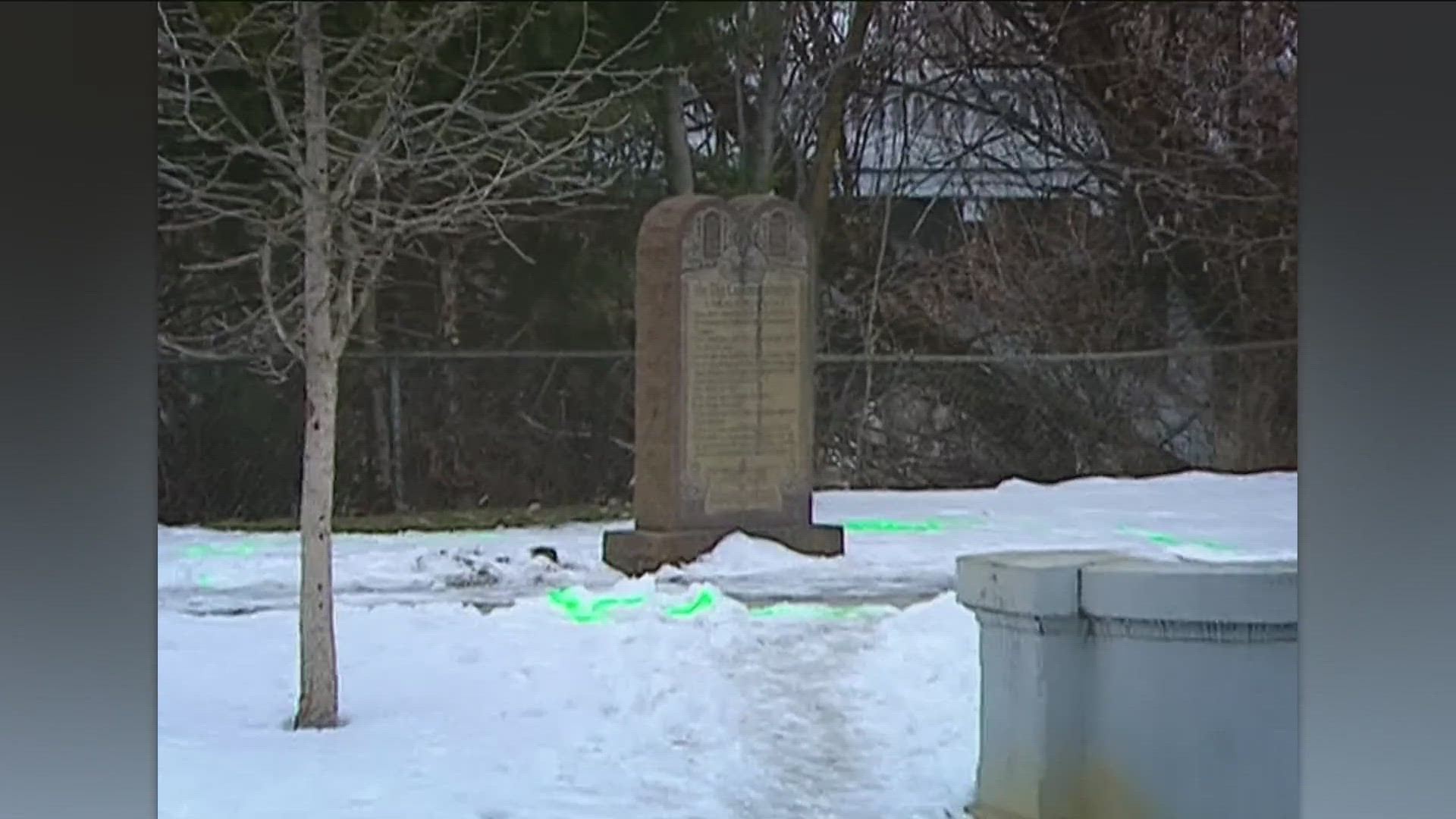BOISE, Idaho — In the fall of 2003, Idaho's capital city saw an interim mayor serve inside Boise City Hall. The previous mayor had resigned amid scandal of misusing public funds and abusing public trust, and eventually was sentenced to 180 days in jail.
The chief of police was given a vote of "no confidence" from the police union for his role in the scandal.
The incoming mayor, Dave Beiter, and newly-elected members of city council, like Alan Shealy, had some cleaning up to do to reestablish some community trust.
Little did they know, that trust would be tested again almost immediately after they were sworn into office in January 2004, when the religious right would clash with the separation of church and state – with the City of Boise stuck in the middle.
The book on Boise's Ten Commandments monument would close a significant chapter on March 29, 20 years ago today, but the story started long before that.
It was a Saturday in early June 1965, when the Boise chapter of Idaho's Fraternal Order of Eagles presented the city with a monolith of the Ten Commandments. The ceremony at Julia Davis Park would be followed by a parade, banquet and dance.

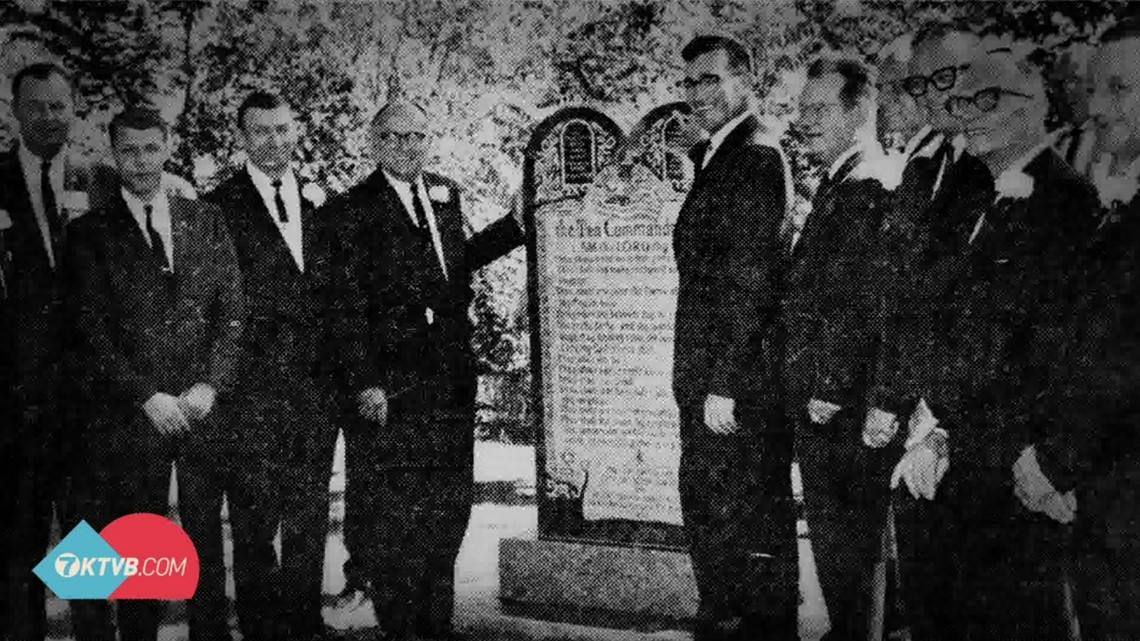
It would also be followed by nearly 40 years of an inconspicuous existence, holy words, hiding in plain sight. That was until late 2003, when Fred Phelps – pastor of the Kansas-based Westboro Baptist Church – continued his crusade of contempt.
Phelps and his followers would protest the existence of gay people, showing up at their funerals and condemning them to hell. However, Phelps was hoping for something more permanent than preaching.
So, when he got wind of what was standing in a park in Boise, he wanted to do what he was trying to do in places like Wyoming, Tennessee and North Carolina.
If a city had a sectarian statue on public property, he wanted to be able to put up an anti-gay monument of his own in that town, to celebrate the death of Matthew Shepard – the Wyoming college student killed for being a homosexual.

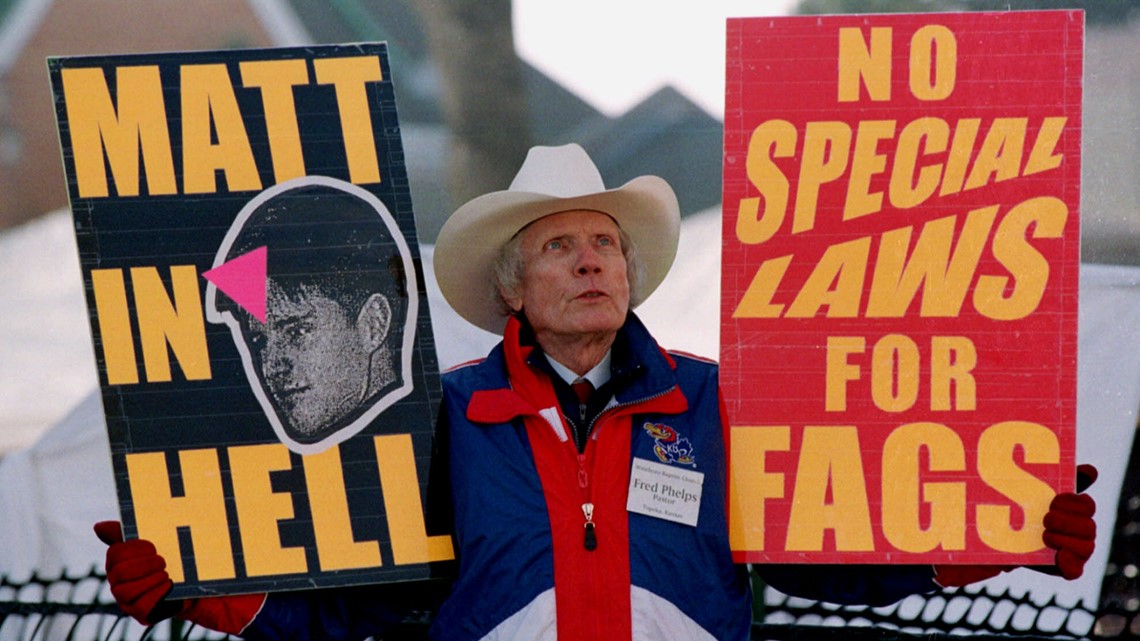
"Under the First Amendment, he has the right to do that and he is simply exercising his right to free speech," an attorney said explaining the Phelps case.
In December 2003, Phelps tried, but was denied by Boise Parks and Recreation. To avoid a public and possibly costly lawsuit by Phelps, Boise City Council voted to move the monument out of Julia Davis Park in January 2004, a motion made by council member Shealy.
"I think that this could have been a very costly distraction to the city and that's why we made the motion that we did," Shealy said.
That sparked Boise resident Brandi Swindell and the newly-created Keep the Commandments Coalition to file a federal lawsuit the next day, asking for a restraining order.
"We're asking that out of respect to the people of Boise that they not remove the Ten Commandments monument in Julia Davis Park," Swindell said. "If they move it, that is a slap in the face to the people of Boise."

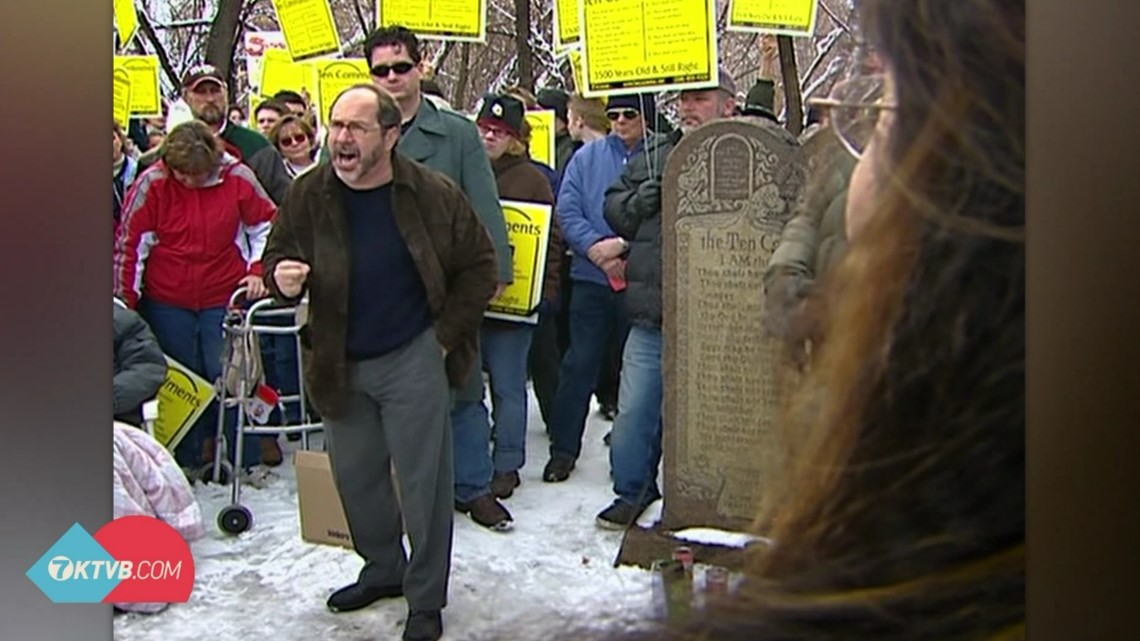
Brian Chavez-Ochoa, attorney for Keep the Commandments Coalition, said "the removal of the monument is the discrimination of Judeo-Christian beliefs in favor of a non-theistic religious belief."
That order was denied, and the daily prayer rallies continued at the monument.
As winter became spring, with all legal means exhausted, the pinnacle moment for the monument came on March 29.
13 peaceful protestors were paraded away and charged with resisting and obstructing officers.

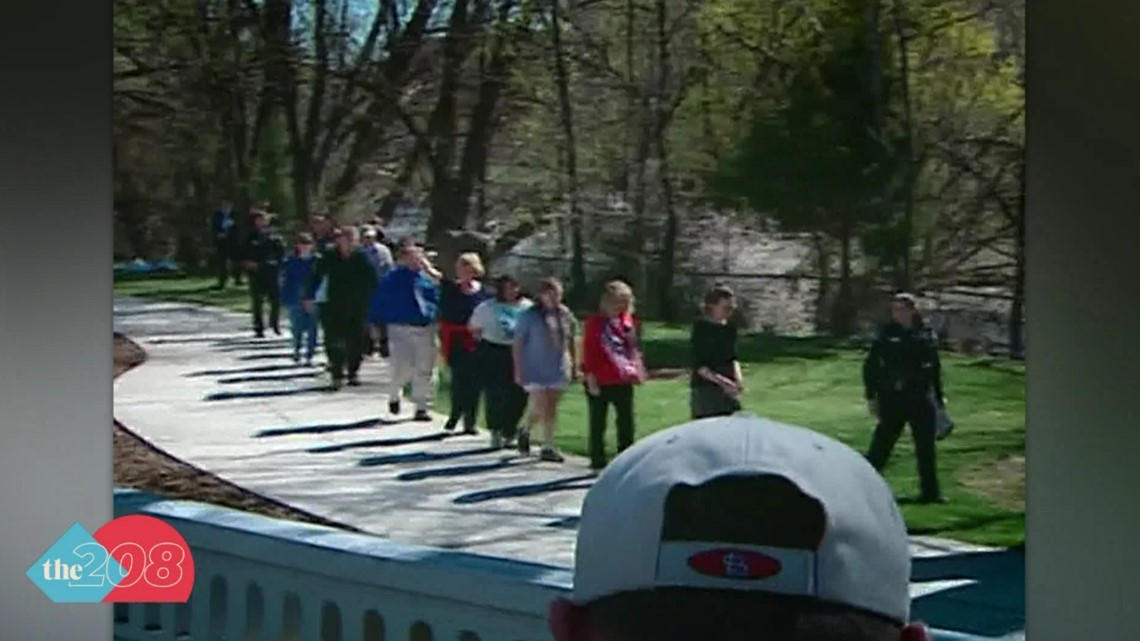
Within minutes, the monument would make its way up Capital Boulevard to be replanted at its new home, in front of Saint Michael's Cathedral on State Street.
"Saint Michael's is one of the oldest churches in the state, an ideal setting for a monument that holds such tremendous significance for so many people," Beiter said.
Swindell in turn said "we think it's very nice gesture of Saint Michael's to offer to take the monument, but the principal is the Ten Commandments monument should stay in its home which is Julia Davis Park."
20 years later, Swindell still believes the same thing.
"I would do it again, because I think religious freedom is something worth fighting for," Swindell said. "I am glad that it is still downtown, that it is behind the capital building on State Street at the episcopal church there. I wish it was still in its original home in Julia Davis Park, but I would do it again because I met friends that I still have to this day, because of Keep the Commandments Coalition. I mean, I was just a citizen in my hometown seeing this important monument being removed, and I knew that I was one of many."
Another one of those many was Dennis Mansfield, who said he first brought the attention to Boise's Ten Commandments monument.
"Wait a minute, there's a statue of the Ten Commandments in Julia Davis Park," Mansfield asked. "What have you stirred up?"
Mansfield said he stepped away when it became clear this innocuous monolith in the park was becoming too political.
"Then there was no dialogue, it was just two monologues," Mansfield said.
Being there at the beginning, meant Mansfield wanted to be there for the end.
"About two or three days before they were tearing it out, they asked me – since I started this – to come and be there if I felt so lead, and so I decided that I would do that," Mansfield said. "I suppose it was a real turning point for me, because here I was sort of a reluctant civil disobedient person. I knew it was wrong that they'd be ripping it out, but I didn't know if it would be right for me to sit there and be arrested, but I was. I realized that was the right thing to do at that time."
Shealy still feels the city did the right thing too.
"This is ridiculous, I'm not going to waste a shekel of taxpayer money defending the city against this lawsuit, so that was the primary motivation for me, making the motion to move the monument," Shealy said. "It had nothing to do with the First Amendment, the establishment clause, nothing like that. It was purely to avoid a lengthy and costly lawsuit. I don't regret the decision, but I regret not having a public hearing first."

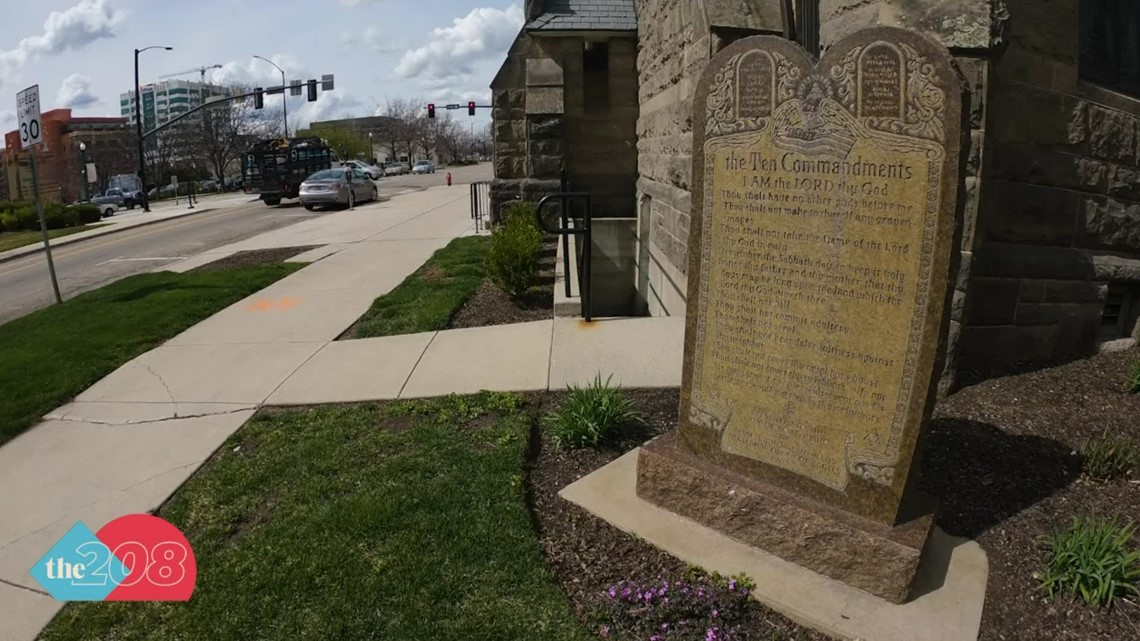
Shealy told KTVB he doesn't think his opinion would have changed with a public hearing, but said "I think it would have been a different venue had the full council had an opportunity to hear what people said about the issue. That's the essence of public service, is to hear people's opinions and then make what you feel is the best and rationale decision."
He added he had no idea the issue would blow up the way it did among Boiseans.
"At the end of the day, I think it's in a better place," Shealy said. "I think the city's in a better place for having avoided that contentious, drawn out legal battle."
At that time it was also made known the cities of Caldwell and Nampa also had Ten Commandment monuments on public property, but they didn't consider moving them.
The movement of the monument was not the end of the story. The Keep the Commandments Coalition turned in more than 18,000 signatures to get an initiative on a ballot for voters to decide if they wanted the monument moved back to Julia Davis Park.
The city denied that petition, saying it was an administrative decision, not a voter decision. However, the Idaho Supreme Court ruled in the coalition's favor, and the initiative was on the ballot in 2006, only to have 52% vote to keep it at the cathedral.
Swindell said if there was one good thing to come out of this, it was that, voter initiatives were validated by the Idaho Supreme Court.
Join 'The 208' conversation:
- Text us at (208) 321-5614
- E-mail us at the208@ktvb.com
- Join our The 208 Facebook group: https://www.facebook.com/groups/the208KTVB/
- Follow us on Twitter: @the208KTVB or tweet #the208 and #SoIdaho
- Follow us on Instagram: @the208KTVB
- Bookmark our landing page: /the-208
- Still reading this list? We're on YouTube, too:
HERE ARE MORE WAYS TO GET NEWS FROM KTVB:
Download the KTVB News Mobile App
Apple iOS: Click here to download
Google Play: Click here to download
Watch news reports for FREE on YouTube: KTVB YouTube channel
Stream Live for FREE on ROKU: Add the channel from the ROKU store or by searching 'KTVB'.
Stream Live for FREE on FIRE TV: Search ‘KTVB’ and click ‘Get’ to download.

